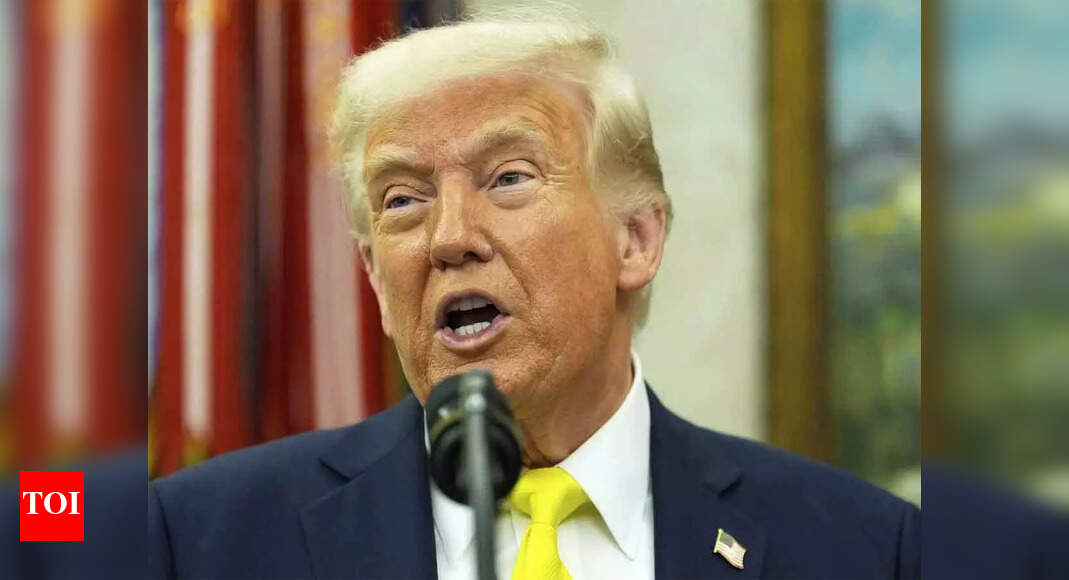Efforts to manipulate interdependence began in Beijing, not Washington or Brussels.
In 2015 the Chinese leadership launched an ambitious “Made in China 2025” program. It aims to reduce the nation’s dependence on imported technology to 30% or less, freeing China from dependence on Western technology.
China’s “protect” agenda contains two prongs.
The first aims to lessen China’s reliance on Western technology while making the West more dependent on Chinese products and materials. Successes are visible: China’s imports as a share of gross domestic product (GDP) have fallen to slightly more than 15% today, compared with 30% in 2005, while the US and Europe rely on China for a host of products.
The second prong seeks to protect the Chinese Communist Party from its own people. China’s “Great Firewall” blocks domestic and foreign content that the government considers dangerous.
As geopolitical tensions have mounted, Chinese authorities have reined in Western companies. They have imposed arbitrary fines, blacklists, counter-espionage law changes, data localization rules, and local content requirements, and conducted raids on businesses. Beijing has ramped up restrictions on exports of critical raw materials that other countries need for electric cars and renewable energy, optical fiber, semiconductors, and military technologies.
China’s “promote” agenda includes massive government subsidies for homegrown industries as well as state-sponsored efforts to acquire foreign technologies — through joint ventures, strategic takeovers of foreign companies, or outright theft. China is estimated to spend up to 5% of its GDP on directed industrial support. Beijing’s “military-civil fusion strategy” builds synergies between its commercial and defense sectors. Its current five-year plan aims to catch up and lead in critical technology. Huawei’s emergence as a dominant fifth-generation telecommunications infrastructure supplier for many countries gives Beijing access to key parts of emerging communications networks, generating choke points of vulnerability.
Beijing supports priority industries ranging from steel and aluminum to shipbuilding and solar panels. It showers companies with subsidies and protection from foreign competition, enabling them to develop fast and at scale, with production exceeding domestic demand, creating export juggernauts that squeeze out international competition. As Beijing faces sluggish growth at home, Western observers are concerned it is trying to replicate its tried-and-true pattern with emerging industries, notably “foundational” semiconductors, electric vehicles and battery technologies, wind power, and “persuasive” artificial intelligence technology.
China’s “partner” agenda aims to secure access to foreign markets and critical resources, circumvent Western tariffs, offer an alternative to “Western-centric” norms and institutions, and position Beijing as a champion of the non-Western world. China has spent a trillion dollars on its flagship Belt and Road Initiative to extend supply chains and logistics routes that advance Chinese standards, practices, digital flows, and political influence across Asia, Africa, and Latin America. China has worked hard to lock in its position as “refinery to the world” by partnering with producers of critical raw materials to feed their products into Chinese-owned refineries.
Get the Latest
Sign up to receive regular Bandwidth emails and stay informed about CEPA’s work.
Beijing also expands the use of its currency, the renminbi, to challenge the dollar-dominated monetary system. It is establishing its own raw materials trading hubs and benchmarks priced in renminbi. It is utilizing such key financial technologies as blockchain, AI, cloud service, and quantum computing to create Sino-centric digital payments systems. It uses shell companies and bilateral arrangements with authoritarian countries like Russia and Iran to bypass Western sanctions.
China’s economic ascent is powering a significant military buildup. Its annual military budget tripled from 2008 to 2019 and by 2023 totaled $225 billion, second only to that of the United States. Beijing is modernizing its forces, expanding its missile capabilities, strengthening its domestic defense industry, and investing in advanced technologies. China’s maritime claims and related military activities threaten key principles of the global commons such as freedom of the seas, freedom of navigation, freedom of information, and the peaceful uses of space.
Beijing seeks technological dominance in command, control, communication systems, and computers (key for political and military decision-making); intelligence, surveillance, and reconnaissance (key for situational awareness); logistical and digital cyber systems (key for deployment of forces and military operations across all domains); and AI (key for long-term competitiveness in uncrewed systems). Beijing is developing quantum technology with military applications in sensing, communications, and data processing. Universal fault-tolerant quantum computer capacities in Chinese hands could lead to hacks of Western encryption systems.
China has built the world’s largest blue-water navy, consisting of 355 ships, with plans for 460 by 2030. It has expanded its ability to project force to the Middle East, Africa, and the Indian Ocean, and it has declared itself a “near-Arctic” state. It has established a strategic mega-port in Peru and a military base in Djibouti and is reportedly considering additional bases in Angola, Equatorial Guinea, Kenya, Namibia, the Seychelles, and Tanzania.
China’s aggressive territorial claims in the South and East China Seas, and its threats to the integrity of Taiwan, present a real risk of conflict in the Indo-Pacific, including direct confrontation between China and the US. An attack on Taiwan could cut critical sea lanes. US and European interests in the Indo-Pacific would be at risk. Opportunities would be created for Russia. US forces might not be available to adequately reinforce European allies against simultaneous Russian and Chinese military aggression.
Beijing and Moscow’s declaration of a “no limits” strategic partnership, and China’s active support for Russia’s war on Ukraine, raises significant security concerns. China is Moscow’s principal partner in evading Western sanctions. NATO members are alarmed by Beijing and Moscow’s joint naval exercises and their collaboration in cyber espionage, hybrid warfare, and arms proliferation. Russian-Sino defense industrial cooperation on sensitive technology, such as theater hypersonic weapons, counter-space capabilities, and submarine technology, presents significant challenges. Russian and Chinese intruders have infiltrated the classified networks of the Pentagon, allied militaries, and ministries of finance and foreign affairs. They have implanted pre-positioned malware in nuclear plants, power grids, and water systems — lurking time bombs that they could activate at a time of their choosing.
The allies must confront this dangerous China Challenge.
Daniel S. Hamilton chaired CEPA’s yearlong series of workshops examining the transatlantic response to the China Challenge. He is a senior non-resident fellow at the Brookings Institution and a senior fellow at the Foreign Policy Institute of Johns Hopkins University School of Advanced International Studies.
Bandwidth is CEPA’s online journal dedicated to advancing transatlantic cooperation on tech policy. All opinions are those of the author and do not necessarily represent the position or views of the institutions they represent or the Center for European Policy Analysis.
Read More From Bandwidth
CEPA’s online journal dedicated to advancing transatlantic cooperation on tech policy.



